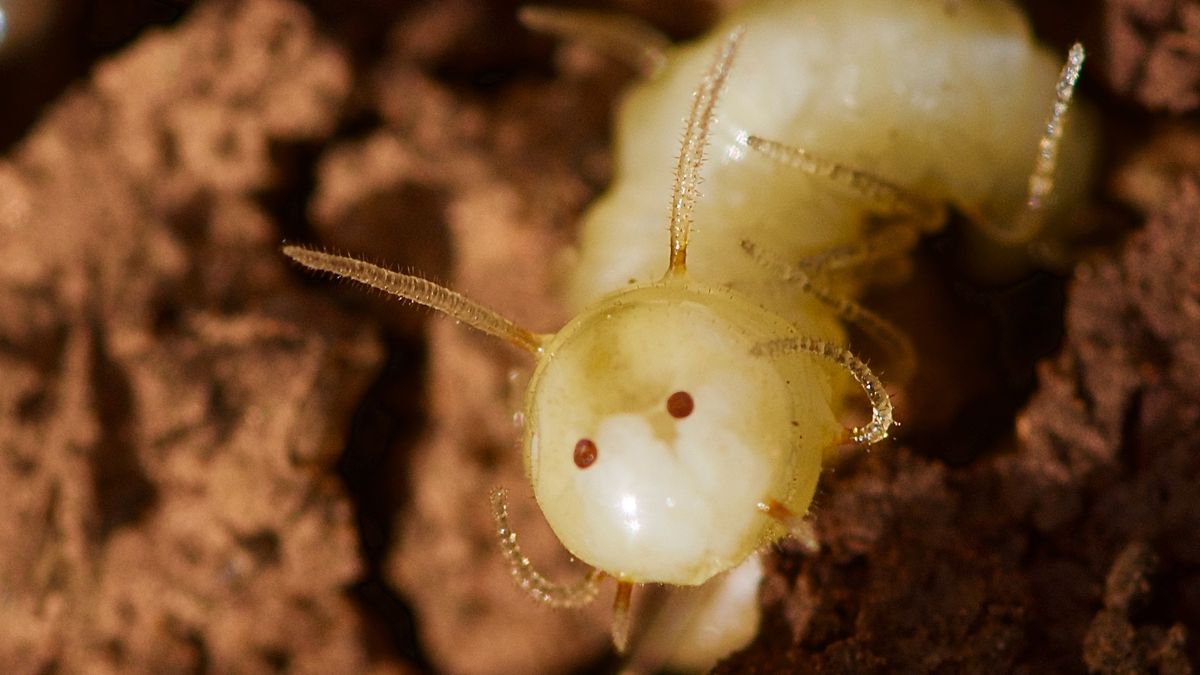Mountain fly maggots have evolved fake faces on their butts as a cunning disguise to infiltrate termite colonies, a new study has found.
Researchers spotted the fake faces, which resemble termite heads, on the rear of a previously unknown blow fly larva living in the mountains of Morocco. These faces are part of an extreme mimicking strategy that trick harvester termites (Anacanthotermes ochraceus) into thinking the fly larvae are part of their colony.
Soldier termites typically kill colony intruders on site, but disguised larvae live among the soldiers without any problems and are granted full access to the termite mound’s food chamber. The disguise is so good that the termites even appear to groom the guileful grubs, according to the study published Monday (Feb. 10) in the journal Current Biology.
Researchers discovered the two-faced larvae by chance while looking for ants in the Anti-Atlas mountain range in southern Morocco. The team lifted a stone and found a termite mound with three of the never-before-seen fly larvae inside, study lead author Roger Vila, a scientist at the Institute of Evolutionary Biology in Spain, explained in a statement.
“It must be an extremely rare species, because we have made three more expeditions in that area and, despite lifting hundreds of stones, we found only two more flies, together, in another termite mound,” Vila said.
Related: Kamikaze termites blow themselves up with ‘explosive’ backpacks — and scientists just figured out how
Termite nests are protected, food-rich habitats for any species cunning enough to get inside. The fly’s strategy is one of social integration, which requires extreme morphological, behavioral and physiological adaptations to pull off, according to the study.
Researchers collected the disguised fly larvae and termites and took them back to the lab for further study, and found a number of extreme adaptations. For example, the larvae had modified breathing holes to act as fake termite eyes and modified sensory organs called papillae that resembled termite antennae.
Chemical disguise
The larvae have also evolved scent chemicals to match the termites’ unique odor. Vila noted that the team studied the chemical composition of the larvae and found they were indistinguishable from the termites in the colonies where they lived.
“They smell exactly the same,” Vila said. “In addition, the larvae and termites in a particular colony have slight differences in their chemical profile that differentiate them from other termite mounds. This odour is key to interacting with the termites and benefiting from their communal life. It is a chemical disguise.”
The researchers found that the larvae were part of the fly genus Rhyncomya. No other member of this group is known to do this kind of mimicry, so the team suspects the larvae are a newfound species. However, the team was unable to raise the larvae to adulthood to be sure as they all died in the lab before they were able to mature.
Villa noted that there may be elements of the termite nest and the relationship between the two species that they were unable to transfer to the lab.
“Their diet is currently unknown, and their adult form remains a mystery,” Vila added.


